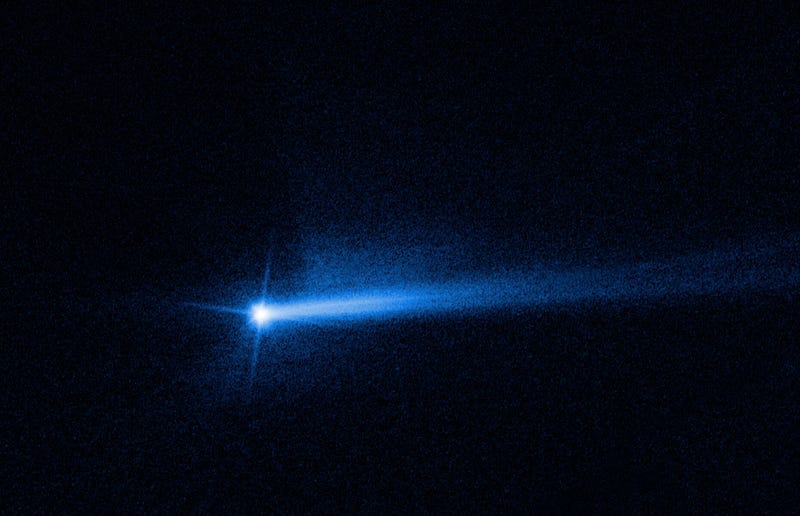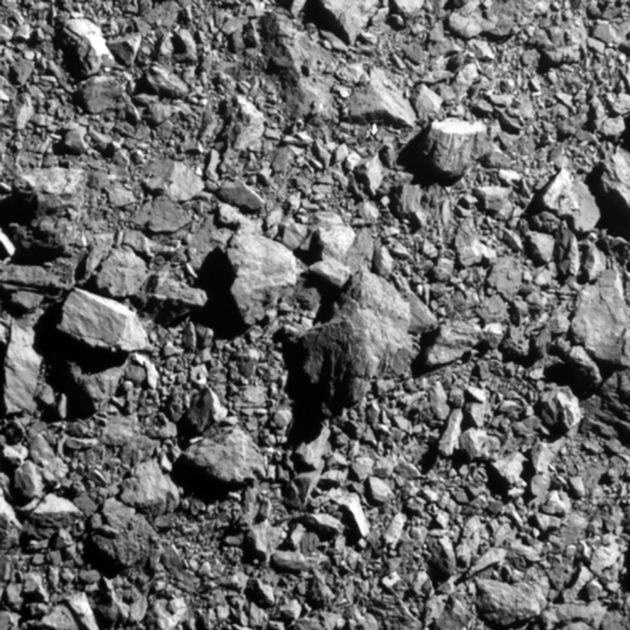NASA's Asteroid Collision: Insights and Discoveries Unveiled
Written on
Chapter 1: The DART Mission Overview
On September 26, 2022, NASA successfully executed its Double Asteroid Redirection Test (DART) mission, a pioneering initiative aimed at assessing the practicality of deflecting asteroids that might threaten Earth. The DART spacecraft made contact with Dimorphos, a minor moonlet orbiting a larger Near-Earth Asteroid called Didymos, in an attempt to evaluate the kinetic impact method. This planetary defense strategy involves directing a spacecraft to collide with an asteroid intentionally, with the hope of altering its course. For more details about the mission, click here.
It is crucial to emphasize that neither Dimorphos nor Didymos presented a risk to our planet.
Following the collision, on December 15, 2022, the DART team shared initial findings during the Fall Meeting of the American Geophysical Union held in Chicago. So, what were the outcomes of this groundbreaking mission?
NASA has been closely observing the debris expelled from the impact to assess its evolution and understand the results of the DART mission. The focus has been to determine how much of the impact's effect was due to the spacecraft's collision and how much was a result of the recoil generated by the debris.

Chapter 2: Momentum Transfer and Its Significance
The team has concentrated on analyzing the gathered data to measure the momentum transfer from the spacecraft, which impacted at approximately 14,000 miles per hour (22,530 kilometers per hour).
“Measuring momentum transfer is vital, as it provides essential information for developing an impactor mission aimed at diverting a hazardous asteroid,” stated Andy Cheng, the lead investigator for DART at the Johns Hopkins Applied Physics Laboratory. “Understanding how a spacecraft's impact alters an asteroid’s momentum is crucial for designing effective planetary defense strategies.”
Based on data collected prior to and following the collision, the researchers discovered that Dimorphos and Didymos share similar compositions. Both are comprised of chondrite, a type of rocky material formed from dust and small grains in the early Solar System, which is also found in the most common meteorites that strike Earth.

The final image of Dimorphos was taken by the DRACO imager onboard the DART mission, approximately 7 miles (12 kilometers) from the asteroid just two seconds before impact. This image reveals a section of the asteroid measuring 100 feet (31 meters) across.
The team calculated that DART provided a momentum transfer to Dimorphos approximately 3.6 times greater than if the asteroid had merely absorbed the spacecraft without producing any ejecta. This indicates that the expelled material played a more significant role in altering the asteroid's trajectory than the spacecraft itself. Additionally, NASA found that DART's impact changed Dimorphos’ orbital period by 33 minutes and resulted in a substantial amount of material being ejected from its surface.
The outcomes exceeded expectations, marking a significant achievement. The DART experiment demonstrated that the kinetic impact technique holds potential for diverting asteroids on a collision course with Earth. NASA aims to leverage these insights for future planetary defense tests and missions. By investigating the feasibility of asteroid deflection, we can develop the technologies and strategies necessary to protect our planet. The success of these initiatives could safeguard humanity and all life on Earth from potential catastrophic impacts.
What are your thoughts on this mission? I invite you to share your opinions in the comments; I will do my best to respond to all serious inquiries!
The first video, "Why NASA Punched an Asteroid," explains the rationale behind the DART mission and its implications for planetary defense strategies.
The second video, "NASA Is Preparing for the Impact of an Asteroid," discusses a new study revealing potential asteroid threats and NASA's preparedness strategies.
Enjoyed this article? Check out these links:
- "NASA Just Punched an Asteroid and May Have Knocked It Off Course"
- "James Webb Space Telescope Directly Images an Exoplanet for the First Time"
- "Earth 2.0: China’s Mission to Answer if We’re Alone in the Universe"
References: